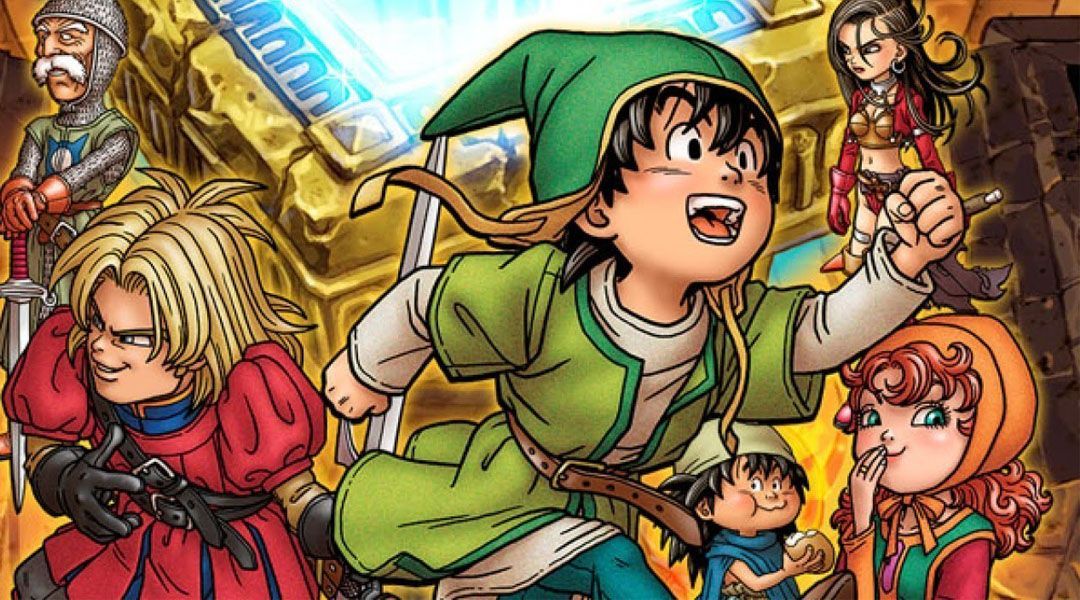
Dragon Quest 7: Fragments of the Forgotten Past Review
By Riley Little 29 September 2016
Dragon Quest 7: Fragments of the Forgotten Past is an engaging remake of a well-liked classic that brings some much needed paint and portability to the overly long game.
In 2016, gamers have become all too familiar with remastered and remade experiences. Indeed, cashing in on nostalgia has become a major tactic for publishers in the industry, and that philosophy has remained especially true for software on Nintendo’s 3DS portable. Beloved titles from the N64 era (like Ocarina of Time, Majora’s Mask, and Star Fox 64) have been brought to the hand-held device following its release, and now Square Enix is breathing some new life into the original PlayStation’s Dragon Warrior 7 – albeit under the revised franchise banner of Dragon Quest.
Now known as Dragon Quest 7: Fragments of the Forgotten Past, loyal fans of the original will get an enhanced port of the title to take with them whilst on the go. Newcomers hoping to familiarize themselves with the series, however, will have the opportunity to do so – although they may not know exactly what they are getting into with this absolute behemoth of a commitment. Despite being a major plus for some, the number of hours that need to be put into this game is a double-edged sword that may not be a selling point for others.

Before delving into that, those unfamiliar with the Dragon Quest property will want to know that it’s a traditional turn-based JRPG that utilizes party mechanics within its battle system. This description may sound rather expected, not to mention comparable to a great number of beloved properties of a similar nature, but those that aren’t already familiar with the core series’ layout will want to be well aware of this before taking the plunge. As many can attest, falling into this genre makes it divisive in the eyes of some, but it’s certainly a memorable adventure filled to bursting with beautifully designed characters from none other than Akira Toriyama.
Having Toriyama, the infamous manga artist behind Dragon Ball, on-tap for the project certainly helps it to standout, and the enhanced visuals that accompany Fragments of the Forgotten Past only make the in-game island of Estard (and further vistas/continents) live up to their intended potential. There’s no disputing that the year 2000 – the same year Dragon Warrior 7 made its initial debut – was littered with innovation and significant hardware advances, but more of the artist’s intended designs shine through splendidly on the more powerful Nintendo 3DS hardware.
Setting aside the aesthetics, fans will find themselves falling for the core group of characters that occupy their team. This is thanks, largely in part, to the sheer time that players have getting to know them. The game itself rolls out quite slowly, ensuring that steps are made in order to give the core trio of protagonists (the player-made character, Prince Kiefer, and Maribel) their due. More warriors join them on their adventure during the course of the game, but the actual rollout and eventual addition of these characters, as previously touched upon, takes an almost absurd amount of time.

Staying true to its roots for this remake was important, that much is undeniable, but that doesn’t pardon existing faults in the game. One of the biggest things that is sure to throw off many is the actual length of the title, which can take upwards of 100 hours to complete fully. That’s a lot of time to dedicate to a single game, and while that adds an ample amount of value to the petite and portable title, it’s also one of its biggest detractors. Pacing is important in any gaming experience, and the time spent building these characters and the world that they live in is a little overwhelming. There’s no question that DQ7 is, simply put, a massive commitment that will not be for everyone.
With that said, those that are willing to sit down and plug into the experience will find it an enjoyable one – although the gameplay itself is a little too simple. The fact that it’s an easy game to tear through allows the combat to take a backseat to the unfolding narrative, but those hoping for a challenge almost certainly won’t find it here. Further mechanics, such as the job system, are also easily overshadowed by the core game itself, although consumers can rest easy knowing that such options are there if and when they need them.
Perhaps the turn-based combat feels a little dated, but the new coat of paint helps place a modern stamp on every battle. Maybe the game runs too long, but the characters and narrative are likeable. The truth is that Dragon Quest 7: Fragments of the Forgotten Past is an all around good game that does too much in terms of length and too little to mix things up. Simply put, it’s a revamped classic from the PlayStation era made mobile, and that’s quite something special for Dragon Quest and JRPG aficionados alike.
TRAILER
Dragon Quest 7: Fragments of the Forgotten Past is available now for Nintendo 3DS and Nintendo 2DS.
Game Rant was provided a copy of Dragon Quest 7: Fragments of the Forgotten Past for the Nintendo 3DS by Nintendo for review purposes.
